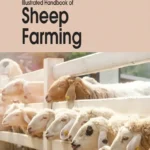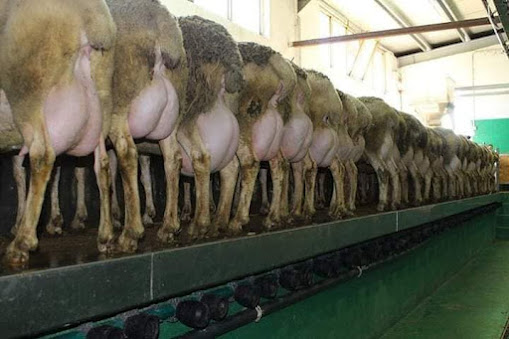Lacaune Sheep
What is the history of Lacaune Sheep?
-
The breed’s name comes from the county town located in the Lacaune highlands in the Tarn. The breed’s native region includes the Aveyron and Tarn departments, as well as neighbouring areas (region called the “Roquefort Sector” in reference to the milk collection area).
The Lacaune is the most widely used dairying sheep breed in France, with a population of about 1.300,000 ewes. Notably, it is the predominant breed used in the production of Roquefort cheese in France.”
Sheep first came to that region of France around 4,000 to 6,000 years ago. The land was rough and desolate but the sheep could adapt well to it.
In the mid-19th century, farmers began to add genetics from other local breeds to produce a hardy breed of sheep that produced a rich milk and good meat. This was the development of the dual-purpose breed of original Lacaune.
The situation of the Lacaune dairy sheep breed has evolved dramatically during the last 40 years. In the 1960s, this dual purpose breed had a low milk yield and was compared in its local basin of production (the Roquefort area) with foreign high milk yield breeds, i.e. Friesian and Sarda breeds.
The results showed very disappointing performances, both for lamb production for the Sarda breed, and for mortality for genotypes with more than 50% Friesian genes, the Friesian breed appearing to be poorly adapted to the local conditions. Therefore, in the 1970s a synthetic line called FSL (3/8 Friesian, 3/8 Sarda, 2/8 Lacaune) was created to avoid having more than 50% of the genes coming from an imported breed.
Since the Lacaune genetic improvement program had become fully efficient in the 1980s, a crossbreeding strategy was disregarded in the Roquefort area.
In the late 1960s, the average milk yield per ewe was only about 70 liters during the human milking period (and excluding the lamb suckling period) per annum. Remarkably, by the late 1990s the milk yield had quadrupled to 280 liters per annum.
The Lacaune is now one of the world’s high-yielding milk breeds. Since 1992, 17 countries have officially imported Lacaune germplasm from France. However, to our knowledge, few comparisons are available, except in Spain with the Churra and Manchega breeds, and initially in Switzerland and Germany, and then in Canada, with the Friesian breed.
-
-
- Lacaune are a hardier breed of dairy sheep.
- The breed is less prone to diseases but crossbreeding for hybrid vigor is still recommended to reduce the amount of incidences of disease in lambs.
- They also do not have as high of birth rates as other dairy sheep.
- They produce less milk than other breeds such as East Friesian but their milk has a higher fat and protein content which produces a higher yield when making cheese.
- The breed is polled (hornless) and are able to resist very large swings in temperature.
- The breed is well fit for harsh terrain with small hooves that can navigate the rocky hillside.
- Many Lacaune sheep have very little wool and their head, legs, and sometimes whole belly is bare.
- Their double coat of wool is able to shed one layer in the summer so they can keep cool.
- The Lacaune sheep are usually white in colour.
- Their heads are elongated and the snout is slightly rounded.
- Their ears slope downwards and are a bit floppy compared to other breeds.
- These sheep also have a quiet bold temperament and are less docile than other dairy breeds of sheep.
- Lacaune sheep are the second highest producing dairy sheep breed in the world.
- Lambing takes place once a year, near the end of the year (November to January).
- Lambs are allowed to suckle for 5 weeks and then are weaned off so the ewes’ milk can be used for production of Roquefort cheese.
- Roquefort is a blue cheese that is usually made from the unpasteurised milk of Lacaune sheep.
What is the weight of mature Lacaune Sheep?
-
Lacaune ram is in the range of 100 – 130 kg and a mature Lacaune ewe 70 – 90 kg.
One Comment
Leave a Reply
You must be logged in to post a comment.





I need it plz share information on my WhatsApp no plz 03059370326